
Get digging!
Whether it's a mini-pond in an old washing up bowl or a watery wonderland for frogs and toads at the end of your garden, you can make a haven for nature in your outdoor space.
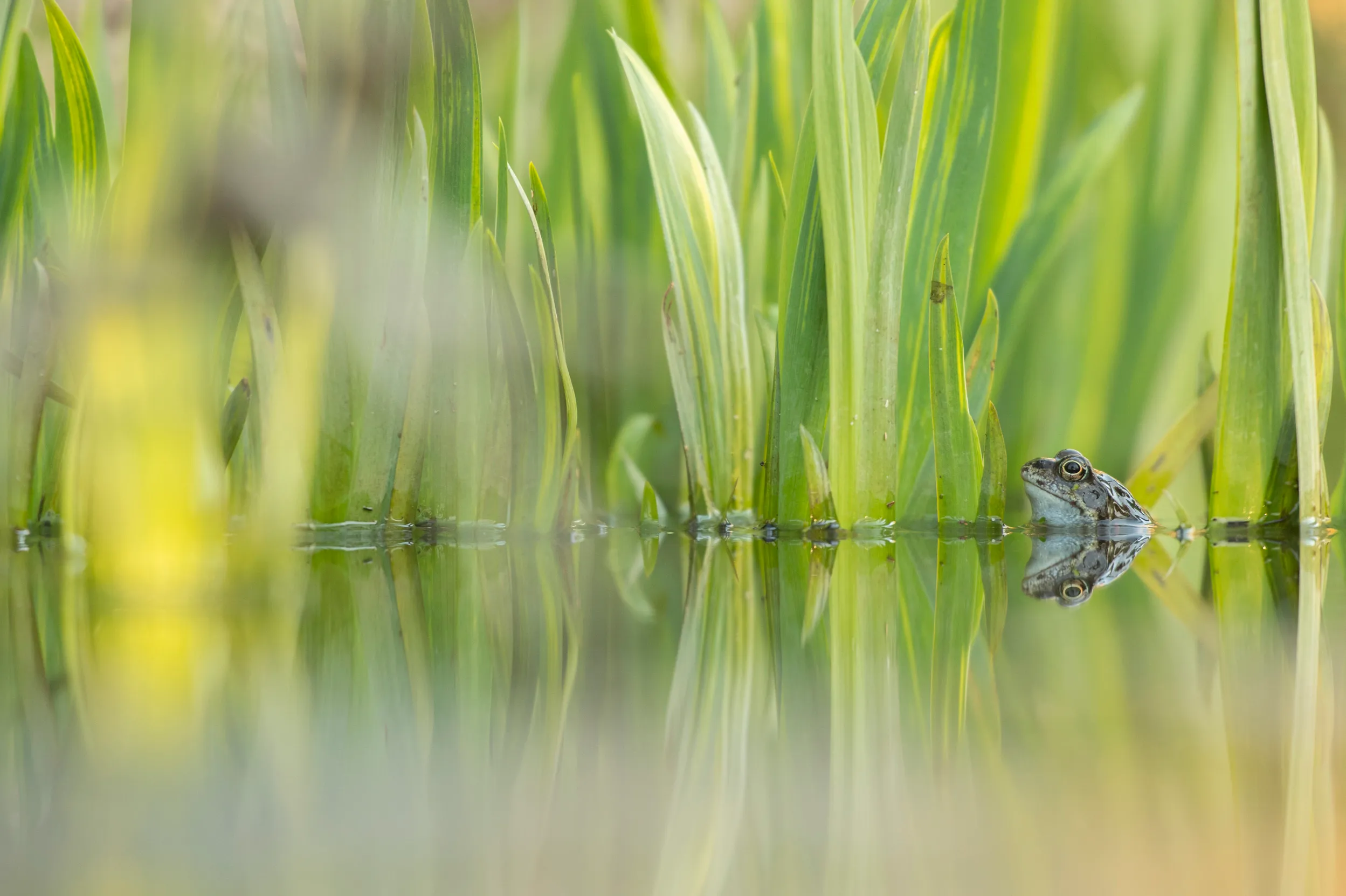
See the section above for more information on the best spots.
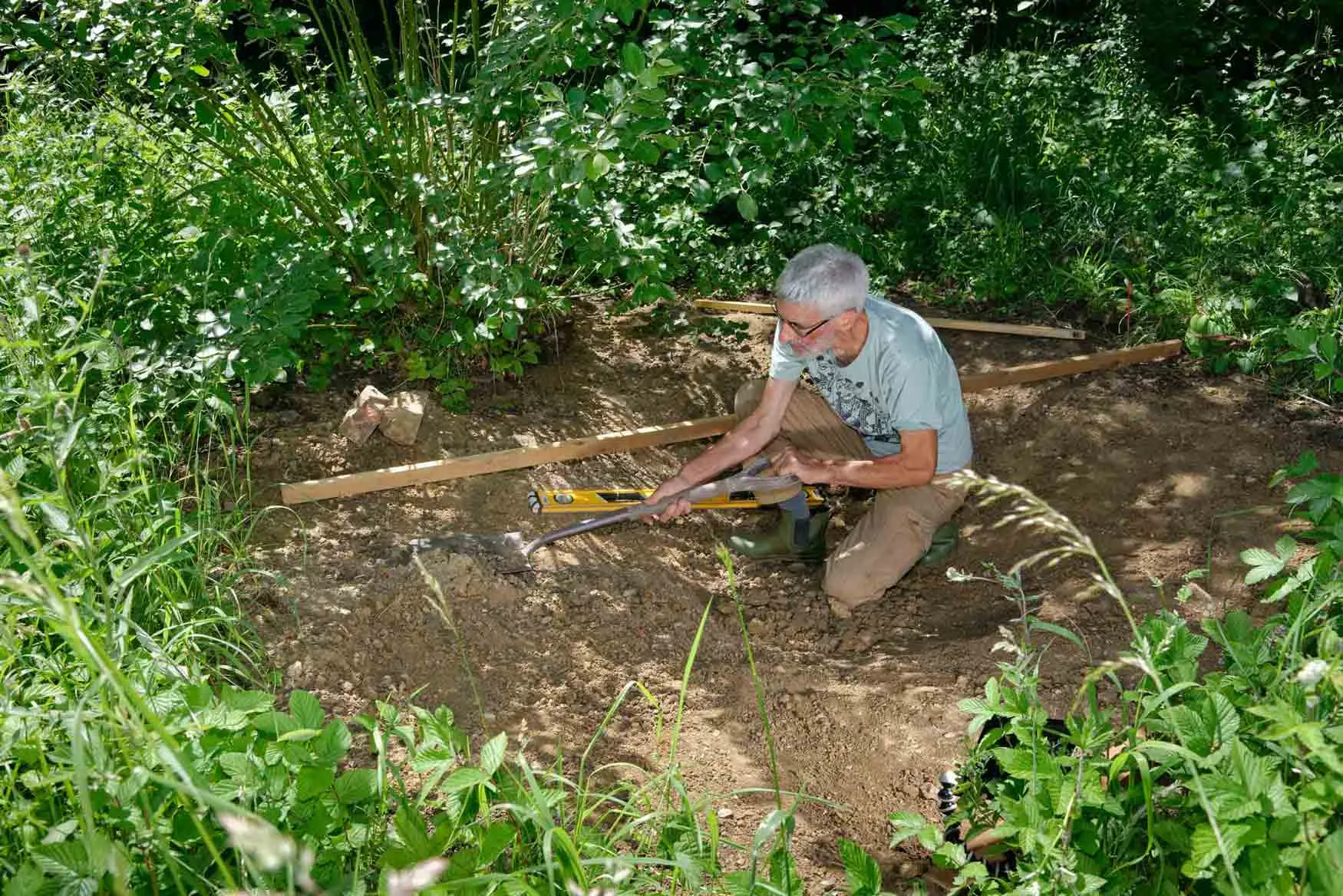
The golden rules for large ponds are:
Get creative with your shape, using wiggly margins or a perfectly geometric shape – wildlife won't mind either way. Try doing a sketch on paper, and use string to set out your edges before digging.
While it’s possible to line a pond with concrete, we recommend using either a pre-moulded liner – usually fiberglass, they are expensive but durable, or a flexible liner – materials include plastic (PVC), butyl rubber and EPDM rubber (such as Firestone). They’re the easiest way to create a pond to the dimensions you want.
Flexible liners don't bend round right angles so use them for more naturally curving ponds. A flexible liner will come as a rectangle. The liner dimensions you will need will be (the maximum length of the pond plus twice the maximum depth) by (the maximum width plus twice the maximum depth). As a rough guide, a 3m x 3m liner will cost £50 - £100. Buy the best quality you can afford so that it won’t leak and will last longer.
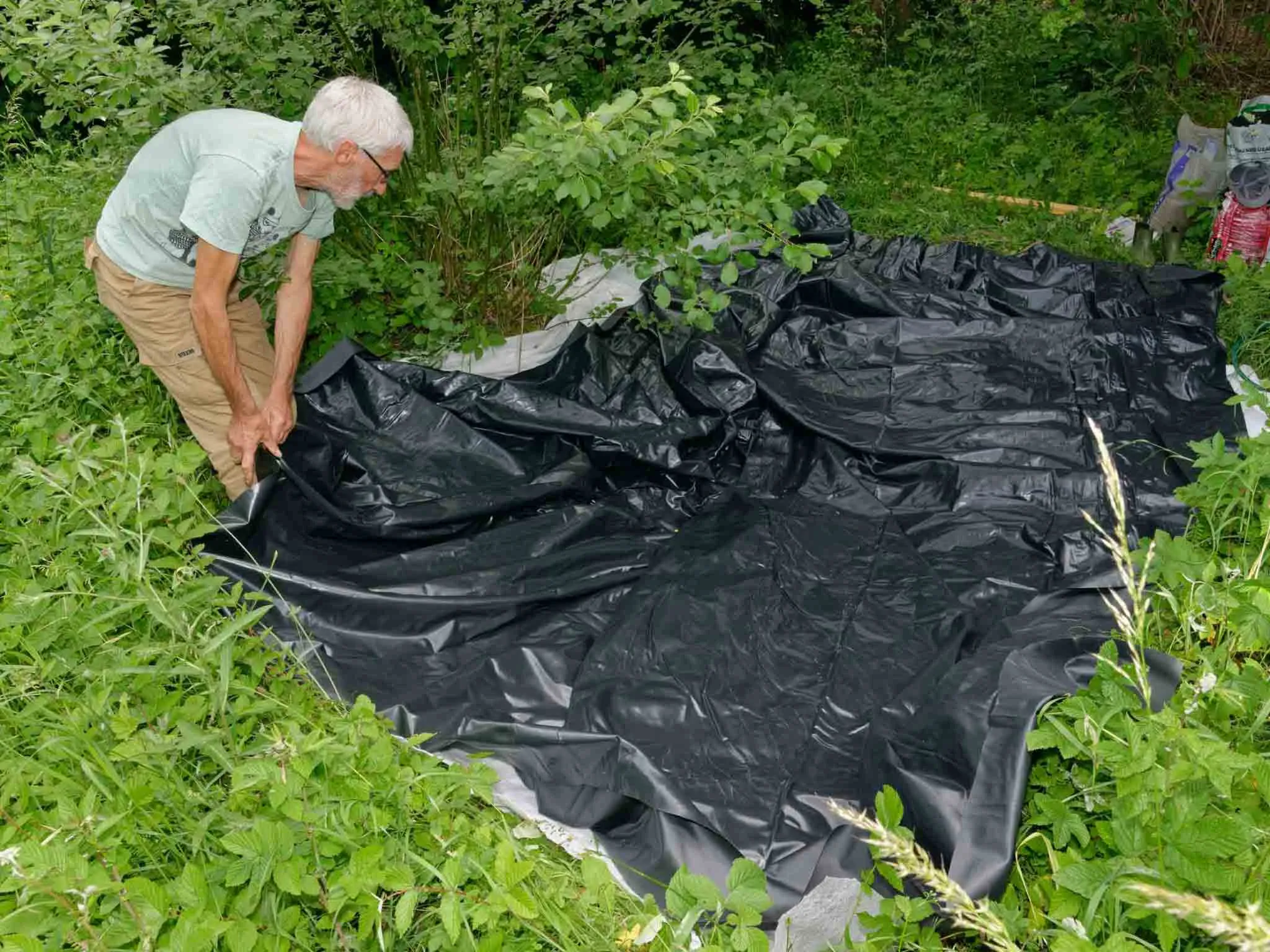
Mark out where your pond is with a hosepipe laid on the ground or lines of builders' sand.
For really big ponds, you may want to hire a mini-digger to take some of the strain. Create horizontal shelves where you will be able to put aquatic plants in pots. Carefully check it is level across all sides with a spirit level.
If you are using a ready-made moulded liner, lower it into the hole to test that you have dug the correct shape. Dig a little bit more earth out than the size of the liner so that it has a bit of wriggle room. Then pack the base with a protective layer of sand, lower the liner into position and carefully pack sand around the sides.
If using a flexible liner, dig a slightly larger hole than you need (about 50mm extra all the way round and down). Then make sure you remove all rocks, roots and sharp objects from the hole. Don’t cut the liner yet.
To ensure the liner doesn't get punctured, place a 50mm layer of sand all around the hole. Then over this put sheets of man-made pond underlay, so that rocks and roots can't penetrate it.
Now unfold your liner across the hole. Remember that EDPM and rubber liners are very heavy, so you may need some help. Push it loosely into the contours. Smooth out the liner and tuck in folds as required.
You can also place some washed gravel into the base to provide cover, and protect the liner. But if you want to use soil, only ever use the special aquatic compost, devoid of almost all nutrients – garden soil will give you algae problems.
It’s best to use rainwater from a water butt, as tap water contains nitrates and phosphates which may give you algae problems.
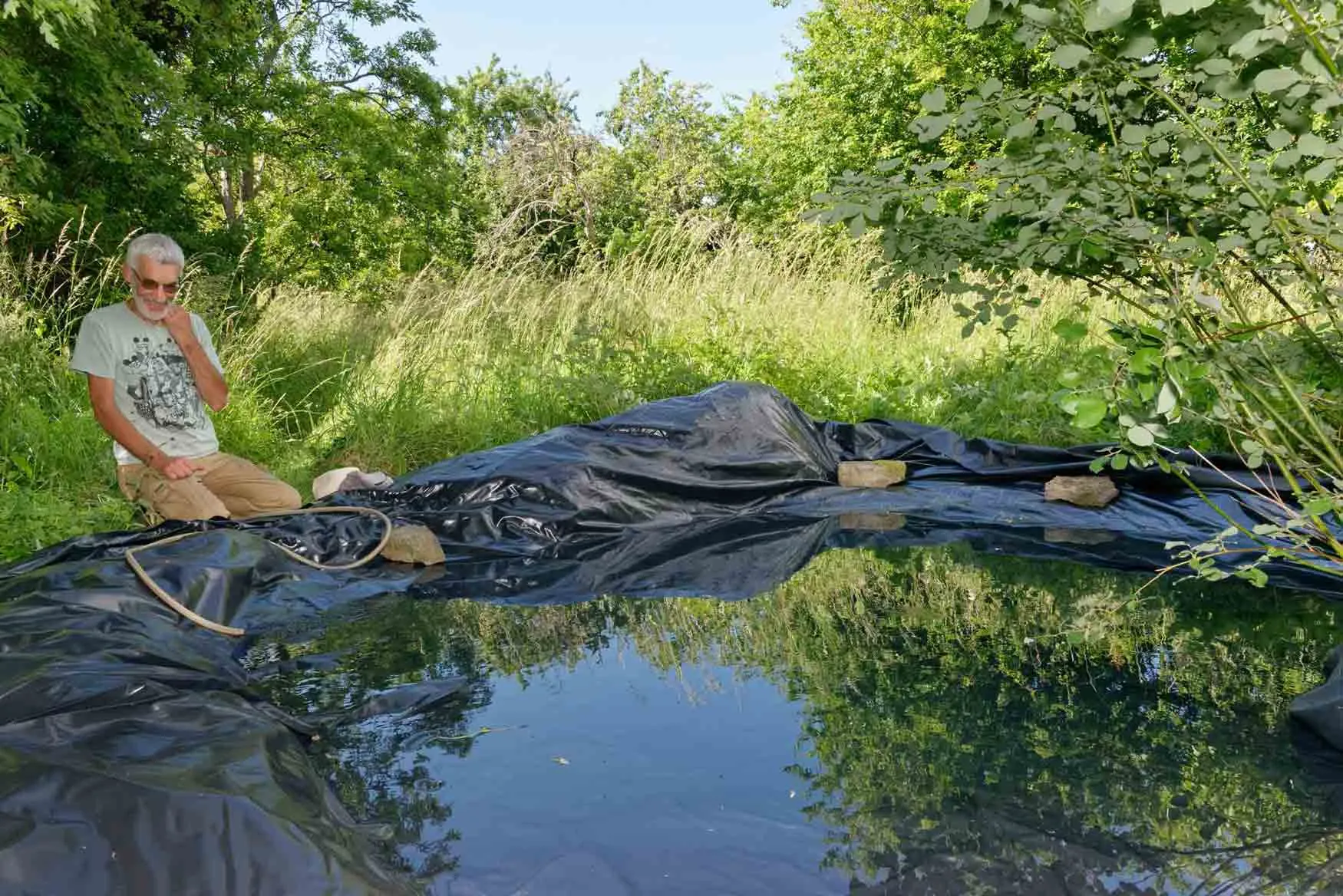
Once the pond is filled, trim the liner that is sticking out around the outside. Tuck rocks or logs around the edge to give it a natural look and hide any remaining liner.
See the section ‘Best plants for wildlife ponds’ above for our recommendations.
In early spring plant lots of marginals onto your pond shelves using aquatic baskets and soil.
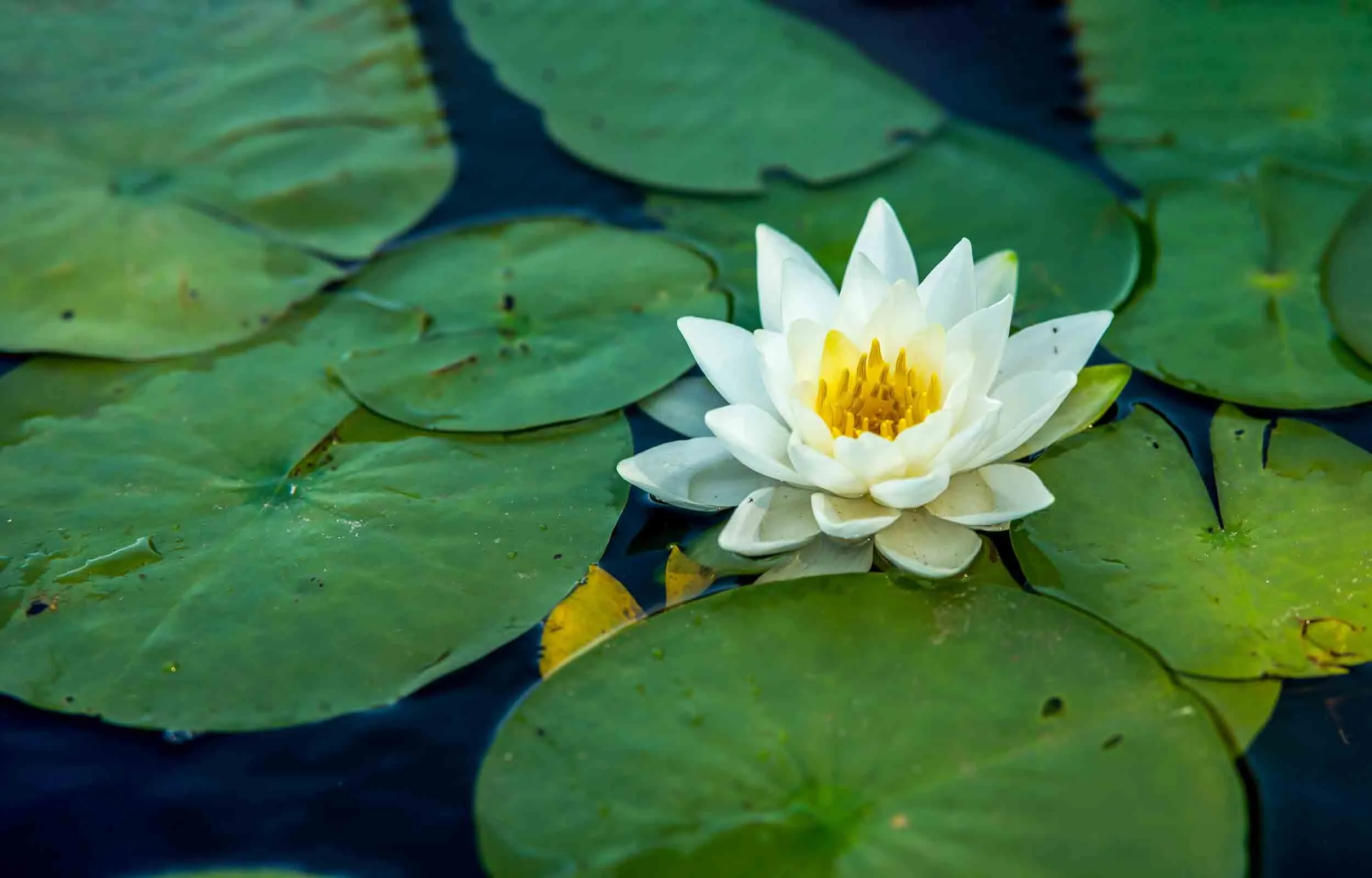
For the first few months, it’s normal to get algae or blanket weed. Remove with a rubber rake, or get children to remove it by winding it around a stick. Before composting, allow it to sit at the side of the pond for critters to escape back into the water.
You may need to top the pond up in hot weather – try to use rainwater from a water butt. The water will look murky at first, but that's normal. Leave the pond for a week or so to settle and it should clear up.
Most of the creatures that use ponds are expert at finding new ones. So there's no need to bring in water or wildlife from other ponds, as this can bring in pathogens.

Get digging!
Ideally, put it somewhere that gets a good amount of light, but isn't in full sunlight all day.
Foliage and low bushes around a pond will be a great habitat for wildlife, and especially good cover for birds and amphibians.
It can be a good idea to avoid trees. If your pond is under a large mature tree, leaves will fall into the water and the roots of young trees may puncture your pond’s lining.
Ponds often look best in the places they would form naturally – the lowest point in the garden – but it isn't essential. If you’re making a large pond, you’re likely to end up with a lot of spare soil as you dig. You could use this to create raised beds, or wildlife-friendly earth mounds elsewhere in the garden.
If you have young children or young visitors, a pond – no matter what size – will need to be somewhere they can only get to if supervised. Installing a low picket fence around the pond can look lovely and help keep children safe.
Here is everything you'll need to make a large wildlife pond